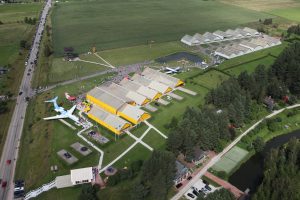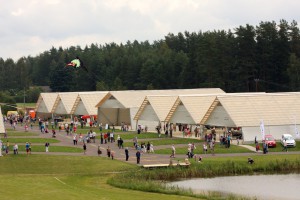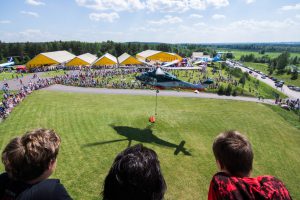Aviation Museum is characterized by its expressive subdivisions. The largest and most important is the outside exposition – aviation technique department, which includes 26 aircrafts and 4 helicopters. Here are the fighters Saab JA 37 Viggen, Mirage IIIRS, MiG-21bis, MiG-23 MLD, MiG-25, F-104 Starfighter, Saab 35 Draken, a bomber Su-24, attack-fighters JAK-28PP, Su-22M4, Saab J32E Lansen, F-4 Phantom II, Harrier GR3, training aircrafts TS-11 Iskra, L-29 Delfin, Aero L-39 Albatross, Hawk HW-326, A-22, passenger aircrafts An-2, JAK-40, Tu-134A, L-410 and helicopters Mil Mi-2RL, Mil Mi-8, S-300, Ka-26.
In the inside exposition aviation technique and launchers kit collection on the 450 m2 exhibition space there are over 400 high-quality models of the aircrafts essential from the point of view of the aviation history. In the naval aviation department one can see the models of aircraft carriers, amphibious assault ships and naval aviation aircrafts, the engines department shows various aircraft engines. In the outside air defense department there are anti-aircraft guns and the representatives of all surface-to-air missiles that were located on the Estonian territory during the Soviet occupation.
For visitors sportive and ohter pleasure there are such attractions in the museum as trampolines, 20m-high-jump catapult, simulators of American mountains, piloting and parachute jumping.
Background:
- 1903 – the first motor plane flight in the human history is performed. Interest of the Estonian people in aviation matters has been born.
- 1908 – the first aeroclubs and airflight courses are organised in Estonia.
- 1912 – S. Utotshkin performs the first motor plane demo flight in Estonia.
- 1918 – the birth year of the Estonian Air Force.
On the eve of the 2nd World War the Estonian Air Force has 65 aircrafts.
After the invasion to Estonia
- the Soviet Military Forces commandeer all Estonian aircrafts, take them to the Soviet Union or demolish them
- any kind of Estonian aviation unit is abolished and/or liquidated
- in addition to the other 1565 Soviet military objects established on the Estonian territory, the second largest Eastern European military airport is built on the former Tartu Raadi Airfield.
- on this military airfield, at only 2 km distance from Tartu city centre, group take-offs of strategic nuclear bombers, including the notorious Soviet Tu-22M „Backfire“ bombers, take place.
- Tartu, the second largest city of Estonia and an oldest university town in Europe, is declared a closed city to foreigners for the next
50 years!
A symbolic fact – in December 1999 it is Tartu where the Aviation Museum is founded and on June 14, 2002 its first exposition is opened. The mission of founding the museum is not so much concentrating on the history than providing an aviation-based knowledge to young people interested in this field.



